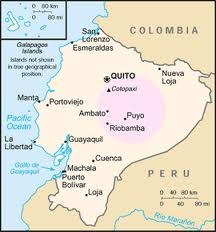How Environmental Lawyers Can Avoid Getting Sued For Legal Malpractice?
By admin on December 30, 2013
 No matter how conscientious, environmental lawyers, like other attorneys, are regularly sued for legal malpractice. It is not difficult to imagine some of the dicey situations where the environmental practitioner may fall prey to such claims:
No matter how conscientious, environmental lawyers, like other attorneys, are regularly sued for legal malpractice. It is not difficult to imagine some of the dicey situations where the environmental practitioner may fall prey to such claims:
(1) a municipality sues its lawyer after the municipality defaults on its bonds because of an unforeseen environmental problem that prevented the subject property from being developed. The lawyer is accused of not having described the risks inherent in the property’s development and for not conducting a proper environmental investigation;
(2) a landfill developer sues its lawyer after failing to obtain a landfill expansion permit because the lawyer failed to provide legal notice of the proposed expansion to adjacent landowners;
(3) the purchaser of commercial property sues its lawyer after discovering contamination on its recently obtained property, claiming that the lawyer never informed it of the existence of prior environmental violations or the consequences of an “as is” clause in the purchase agreement;
(4) a New Jersey seller of an industrial parcel sues its lawyer after discovering that it retained significant post-closing environmental liability under the ISRA statute; and finally,
(5) a cost recovery plaintiff sues its lawyer for failing to pursue all relevant parties in a cost recovery litigation.
Is there a strategy for the environmental practitioner to defend these claims, or to prevent them from being brought in the first instance? Michael L. Shakman, Diane F. Klotnia, and Edward W. Feldman, partners at Miller Shakman & Beem LLP in Chicago, have written an excellent article titled, “Why Do Environmental Lawyers Get Sued for Malpractice? What Can They Do to Avoid a Malpractice Claim?” that appeared in the Bloomberg BNA Toxics Law Reporter, 28 TXLR 1285, on November 21, 2013.
The primary takeaway of Shakman et al.is that it is imperative to document in writing precisely what the scope of the retention will be and the tasks to be undertaken pursuant to that retention, and what it won’t be– those tasks that are NOT included in the retention.
In the scenarios described above, some of which are reported by the authors, there is often stark disagreement between lawyer and client concerning either the scope of the retention or the tasks to be performed. Sometime the dispute is over when the retention ended. Here, then, is the authors’ advice (both quoted and paraphrased:)
(1) Eliminate uncertainty at the outset of the representation by clearly and explicitly delineating the scope of the engagement in a written engagement letter. Spell out the tasks the lawyer has agreed to undertake and make clear that unless the scope of work is altered by agreement in writing, the lawyer is not responsible for any other tasks. The lawyer may also want to specify examples of the tasks for which he or she is not responsible, although admittedly this may be the last thing on a lawyer’s mind after winning a new client engagement;
(2) If the engagement letter provides for a formal method for documenting changes to the lawyer’s scope of work – and if the lawyer adheres to this practice during the course of the retention, the lawyer is more likely to be protected against after-the-fact assertions the lawyer was supposed to take on tasks not described.
Thus, in one case discussed by Shakman et al., which involved the lawyer’s role in assisting the municipality in a bond offering, the lawyer successfully defended the claim by relying on his engagement letter, which made clear that the retention did not include a review of the Phase I Environmental Site Assessment.
(3) At times there may be some activity that the lawyer might perform, in the interest of being exhaustive, but does not perform because the client did not want to incur the additional cost. However, if it turns out in hindsight that relevant information was overlooked because of cost limitations, the lawyer will likely be blamed anyway. Again, “papering the file” is the best means for protection against Monday morning quarterbacking. If the lawyer discussed with the client the pros and cons of expending additional time, and incurring significant fees, on potentially useful but discretionary discovery on investigation, that consultation – and the conclusion reached – should be confirmed in writing to the client.
In small to medium-size real estate transactions, there are countless instances where the client has been advised that it would be prudent to spend several thousand dollars to perform additional investigation to identify the presence of what might possibly be, for example, an old underground storage tanks on the subject property only for the practitioner to be instructed that the client that is well aware of the risk but does not want to incur additional costs?
Hopefully, all of those memos to the file (in the early years) and emails (in the latter years) have been preserved against a future day when, at one or more of those sites, a nasty, leaking UST is uncovered and the client demands to know why the environmental lawyer didn’t undertake additional precautionary steps at the time.
All of the admonitions addressed to environmental lawyers apply equally to environmental consultants, who are also often unfairly taken to task for not performing work, or providing advice, outside their written scope of work.


 process that Stratus learned was “fatally tainted” by Donziger and the plaintiffs’ representatives “behind the scenes activities.”
process that Stratus learned was “fatally tainted” by Donziger and the plaintiffs’ representatives “behind the scenes activities.”